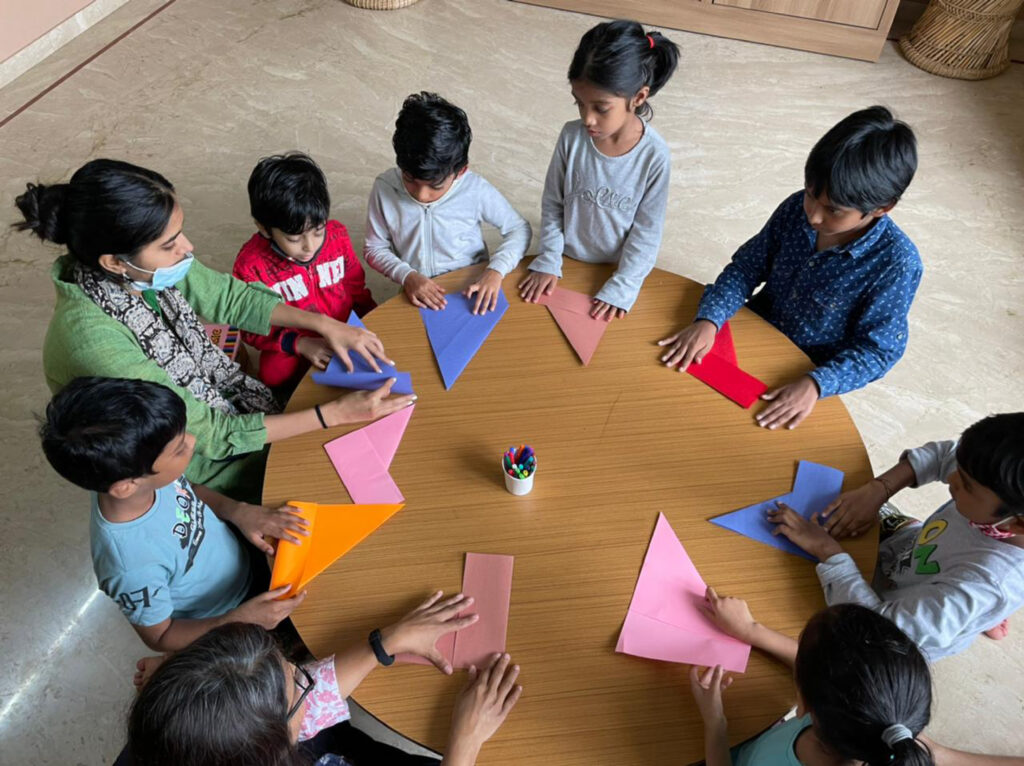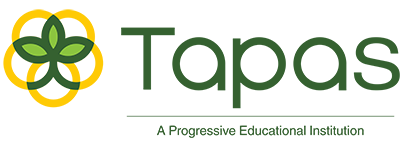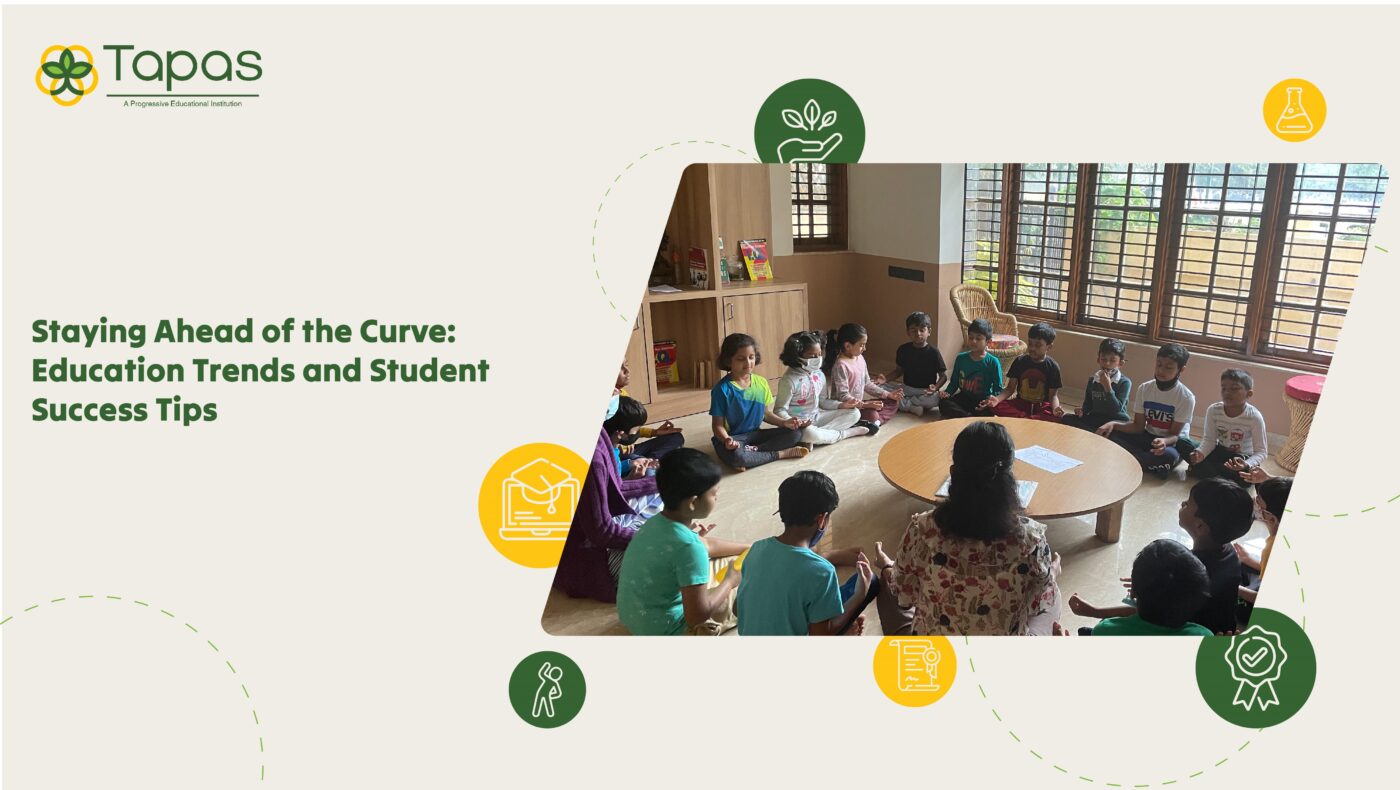The landscape of education is continuously evolving, shaped by a dynamic interplay of factors. Embracing these changes is key to student success. The latest trends in education emphasize personalized learning, harnessing the power of technology, and fostering creativity and critical thinking through project-based learning. STEM and STEAM programs are gaining traction, promoting academic excellence and well-rounded development. Inclusive and diverse classrooms create opportunities for all learners while addressing students’ mental health and well-being is a top priority. These trends ensure that students are well-prepared for their future careers. Staying ahead of the curve in education is essential for building lifelong learning skills, and empowering students to excel in an ever-changing world.
Personalized Learning
Tailored learning experiences hold immense significance in education, recognizing that each student is unique. Personalized learning allows educators to address individual needs, strengths, and weaknesses, creating a more effective and engaging learning environment. Adaptive technologies and data-driven insights play a crucial role in tailoring education, ensuring that students progress at their own pace. This approach fosters a deeper understanding of subjects, promoting student success and lifelong learning. By accommodating diverse learning styles, personalized education ensures that no student is left behind and that all can reach their full potential. It’s a fundamental aspect of contemporary education trends.
Tech Integration
- Online learning platforms have revolutionized education by providing accessible and flexible learning opportunities for students of all ages.
- AI-powered educational tools, such as chatbots and virtual tutors, offer personalized assistance and immediate feedback, enhancing the learning experience.
- Virtual reality (VR) and augmented reality (AR) enable immersive and interactive learning, making complex concepts more understandable.
- Blended learning combines traditional classroom instruction with digital resources, optimizing the benefits of both approaches.
- Big data and analytics help educators assess student progress, identify areas for improvement, and tailor instruction accordingly.
- E-books and digital libraries provide students with a vast array of resources and the convenience of portability.
- Gamification techniques turn learning into engaging and interactive experiences, motivating students to achieve academic excellence.
- Technology facilitates global collaborations and the sharing of knowledge, broadening students’ perspectives and fostering cultural awareness.
Project-Based Learning
 Project-based learning (PBL) offers an array of benefits in fostering critical thinking and problem-solving skills among students. It encourages active engagement and hands-on exploration, allowing students to delve deep into complex subjects. Through PBL, students develop the ability to identify issues, analyze data, and devise creative solutions. They also refine their communication and collaboration skills by working in teams. This approach makes learning relevant and practical, as students tackle real-world challenges. In the process, they gain a deeper understanding of the subjects, enhancing their academic excellence and preparing them for lifelong learning, where critical thinking and problem-solving are indispensable.
Project-based learning (PBL) offers an array of benefits in fostering critical thinking and problem-solving skills among students. It encourages active engagement and hands-on exploration, allowing students to delve deep into complex subjects. Through PBL, students develop the ability to identify issues, analyze data, and devise creative solutions. They also refine their communication and collaboration skills by working in teams. This approach makes learning relevant and practical, as students tackle real-world challenges. In the process, they gain a deeper understanding of the subjects, enhancing their academic excellence and preparing them for lifelong learning, where critical thinking and problem-solving are indispensable.
STEM and STEAM Education
| DISCIPLINE | IMPORTANCE |
| Science | Fosters curiosity and scientific thinking. |
| Technology | Teaches practical tech skills and digital literacy. |
| Engineering | Encourages problem-solving and innovation. |
| Arts | Cultivates creativity and self-expression. |
| Mathematics | Develops analytical and logical reasoning. |
Incorporating STEAM disciplines into the curriculum provides a well-rounded education that nurtures diverse skills and prepares students for an evolving world.
Inclusivity and Diversity
In modern education, there’s a growing emphasis on fostering inclusive and diverse learning environments. This trend recognizes the importance of catering to the unique needs and backgrounds of all students. By promoting inclusivity, educational institutions ensure that every learner, regardless of their race, gender, abilities, or socioeconomic status, has equitable access to quality education. Creating diverse learning spaces not only reflects the real-world setting but also enriches the classroom experience by incorporating a variety of perspectives, ideas, and approaches. Inclusivity and diversity encourage empathy, respect, and the development of lifelong interpersonal skills, essential for student success in an ever-evolving global society.
Mental Health and Well-being
Recognizing the importance of addressing students’ mental health has become a significant trend in education. Modern educational institutions are increasingly prioritizing the well-being of their students by offering resources and support for mental health. The stresses of academic life, peer relationships, and societal pressures can take a toll on students. By acknowledging these challenges and providing access to counseling, mental health services, and resources, schools aim to create a more supportive and nurturing learning environment. This not only contributes to improved mental and emotional well-being but also enhances students’ overall academic performance and personal growth, ensuring their success throughout their educational journey.
Study Strategies and Time Management
Create a Schedule: Develop a daily or weekly study schedule to allocate time for each subject or task.
Set Goals: Clearly define your study objectives, making it easier to stay focused.
Prioritize Tasks: Identify the most important or challenging tasks and tackle them first.
Minimize Distractions: Find a quiet, distraction-free space for studying.
Use Technology Wisely: Leverage apps and digital tools for organization and productivity.
Take Breaks: Short, regular breaks can help maintain concentration and reduce mental fatigue.
Active Learning: Engage with the material actively through discussions, practice, or teaching others.
Healthy Lifestyle: Get adequate sleep, maintain a balanced diet, and engage in regular physical activity to boost productivity.
Organize Your Study Materials: Keep notes and materials organized, making it easier to find what you need.
Seek Help: Don’t hesitate to reach out to teachers, peers, or tutors for clarification when needed.
Remember, everyone’s study habits and time management techniques may vary, so find what works best for you.
Preparing for Future Careers
Staying abreast of education trends is a crucial step in preparing students for future career success. It ensures they are well-equipped with the latest skills and knowledge. By following education trends, students can:
- Adapt to Changing Job Markets: Recognizing emerging fields and skills in demand helps students choose career paths that align with market needs.
- Cultivate Lifelong Learning: Being aware of trends encourages a habit of continuous learning, vital in today’s fast-paced world.
- Enhance Critical Thinking: Education trends often promote critical thinking, creativity, and problem-solving skills, essential for diverse career opportunities.
- Embrace Innovation: Students can harness the latest educational technologies and teaching methods to develop adaptable skill sets.
- Diversity and Inclusion: Understanding trends in inclusive education fosters appreciation for diverse workplaces.
In sum, staying updated with education trends empowers students to become adaptable, forward-thinking, and successful in their future careers.
Parental Involvement
In the digital age, parents play a pivotal role in supporting their children’s education. Here’s how they can contribute:
- Active Engagement: Participate in their child’s digital learning journey, showing interest in their online activities.
- Tech Literacy: Familiarize themselves with digital tools and platforms to assist and guide their children effectively.
- Setting Boundaries: Establish healthy screen time limits and ensure the balance between online learning and other activities.
- Safety Awareness: Educate children about online safety, privacy, and responsible internet usage.
- Regular Communication: Maintain open communication with teachers to stay informed about their child’s progress.
- Homework Assistance: Provide support and guidance when children encounter challenges with digital assignments.
- Encourage Critical Thinking: Foster curiosity and critical thinking skills to navigate the vast online resources.
- Learning Together: Participate in online courses, workshops, or activities with their children to encourage a love for learning.
By actively engaging in their child’s digital education, parents can create a supportive and enriching learning environment.
Conclusion
Embracing the evolving trends in education is the path to academic excellence and lifelong learning skills. To thrive in the digital age, stay updated with educational innovations. Tailored learning, diverse environments, and mental health support create a well-rounded education. Technology and project-based learning enhance critical thinking. Inclusivity fosters a holistic approach to learning. In the post-pandemic era, remote and blended models offer flexibility. Effective study habits and time management are essential skills. By embracing these trends, you’ll be well-prepared for a successful educational journey. Explore more at Tapas Education and kickstart your child’s path to success!

